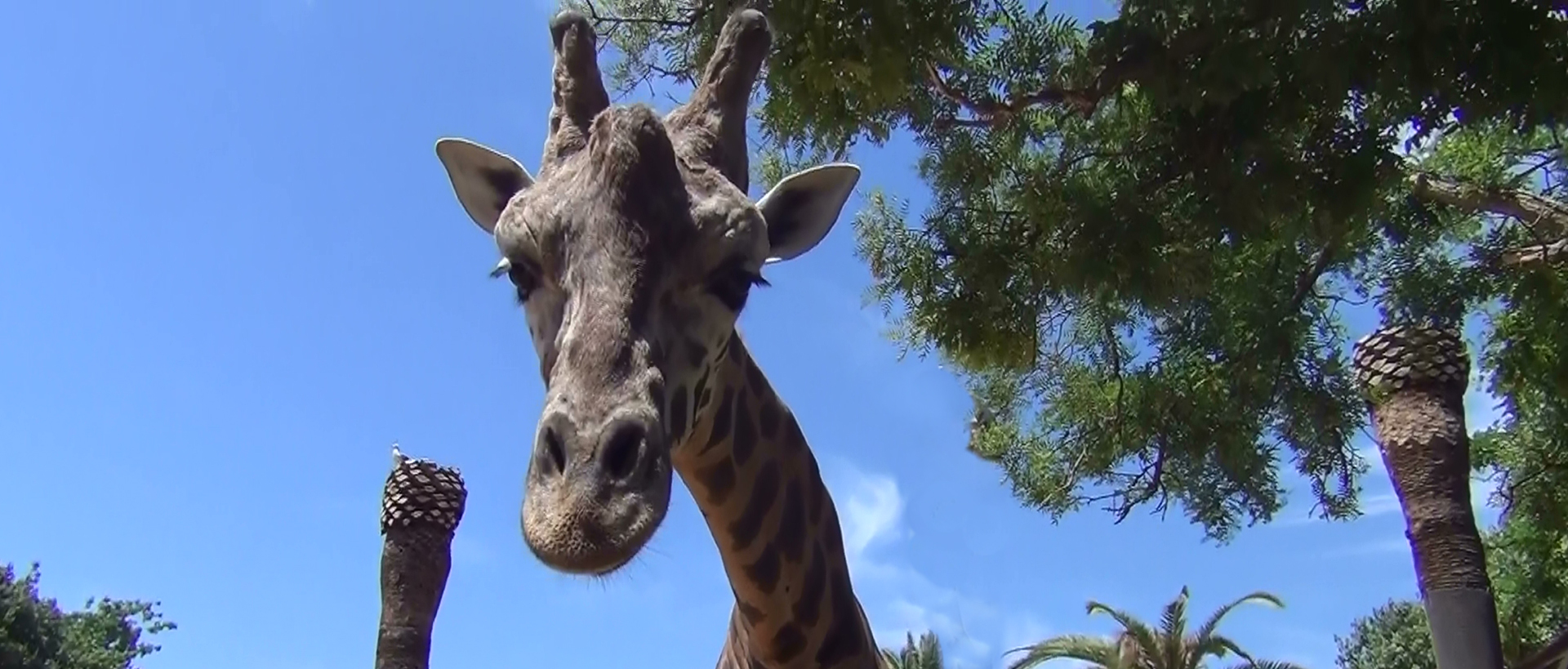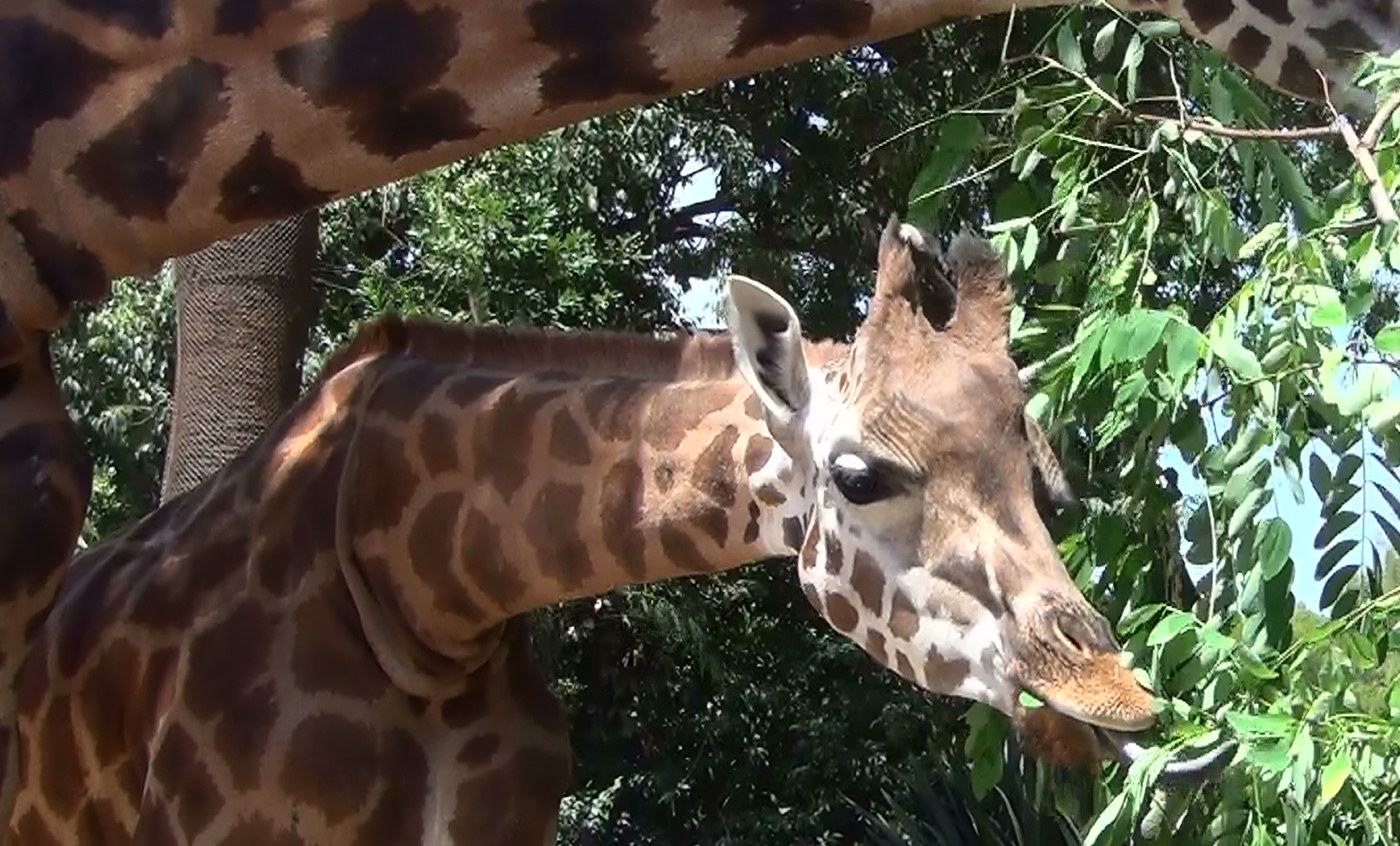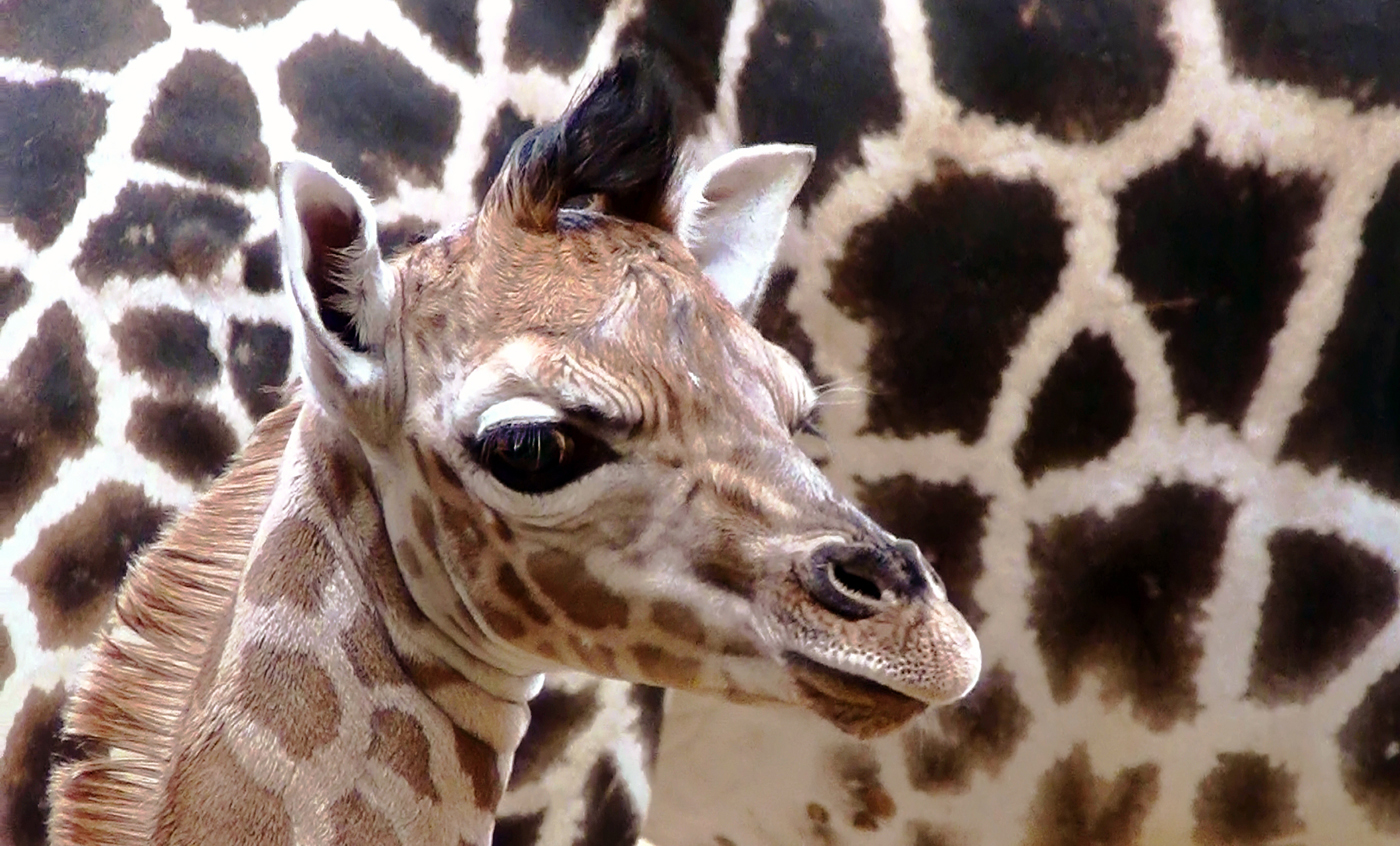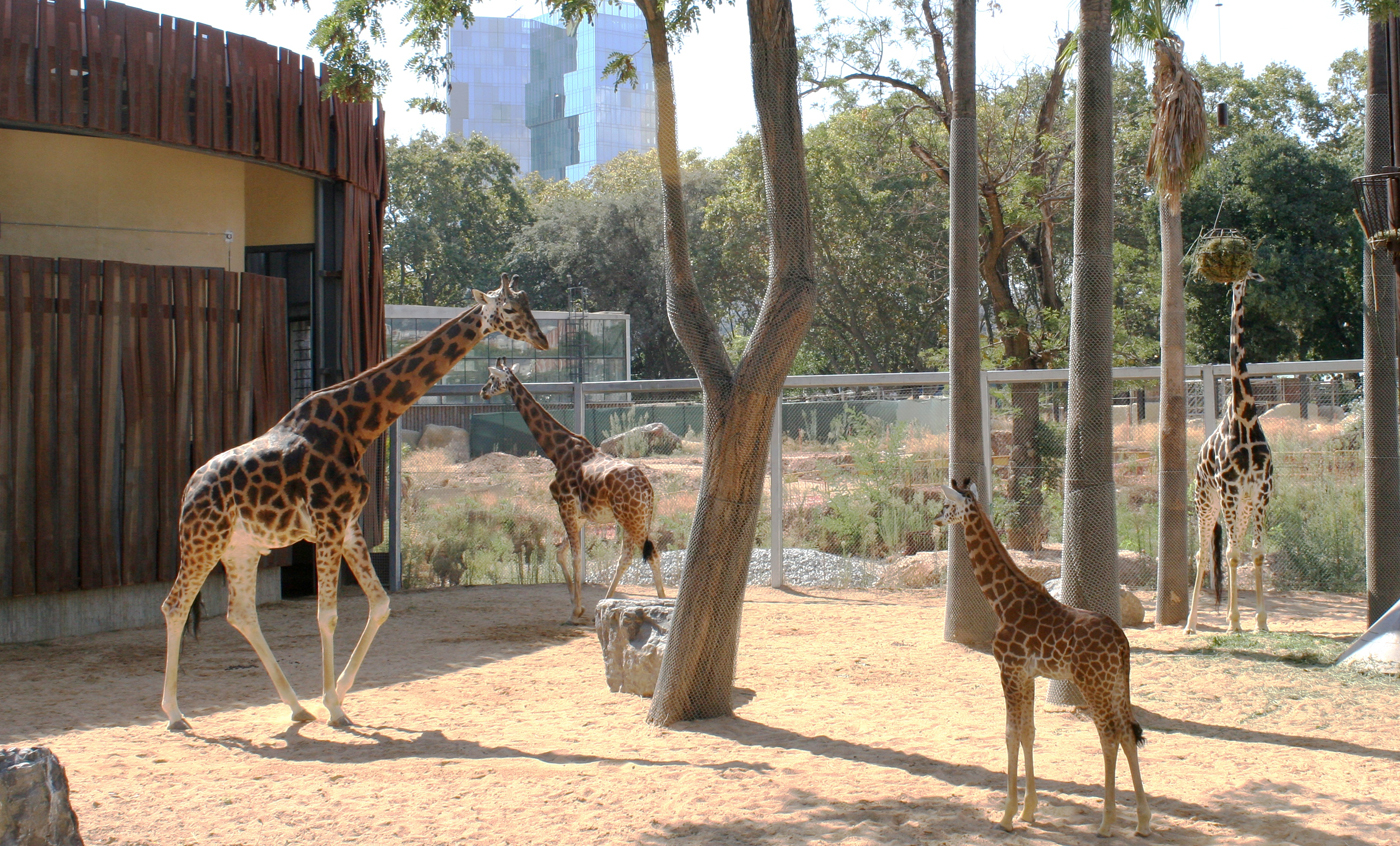Rothschild's giraffe
The giraffe, despite being one of the largest animals in earth, weighting up to 1,900 kg, has a slender and agile body and thanks to its long neck and limbs, can raise its head up to 6 meters high.
It is a ruminant herbivore that feeds on leaves and sprouts from the higher parts of trees, where other animals cannot reach. Its long and flexible tongue helps them eat the leaves without being hurt by the thorns of acacias.
Each June 21st is World Giraffe Day, created by the Giraffe Conservation Foundation to obtain support in order to protect this animal, threatened in the wild.
Natural habit
Giraffes live in great part of Africa in southern Sahara, especially in eastern and southern Africa, while its presence in western Africa has decreased drastically. The subspecies in the Zoo of Barcelona, Rothschild’s giraffe (Giraffa camelopardalis rothschildi) lives only southern Sudan, northern Uganda and wester Kenya.
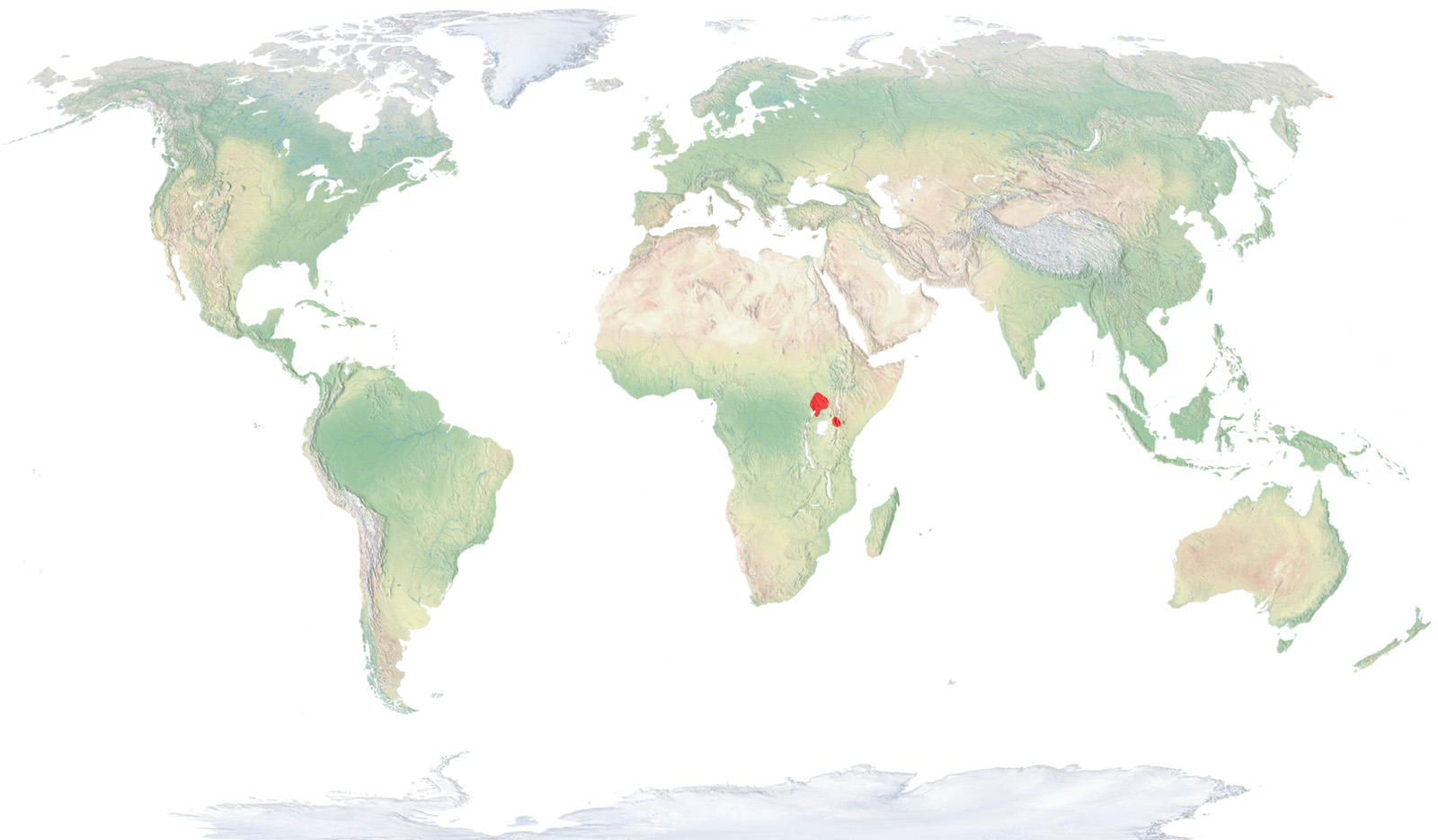
- Distribution / Resident
- Breeding
- Wintering
- Subspecies
Risk level
- Extint
- Extint in the wild
- Critically endangered
- In Danger
- Vulnerable
- Near threatened
- Minor concern
- Insufficient data
- Not evaluated
Taxonomy
Physical characteristics
Biology
Reproduction
Biology
The giraffe, despite being one of the largest animals in earth has a slender and agile body and thanks to its long neck and limbs, can raise its head up to 6 meters high. This extravagant silhouette grants several advantages to the giraffe, such as being able to eat the highest plants of trees and its privileged visibility. Its front limbs are much longer than the rear ones, which affects its movement, moving one side’s legs after the other at low speed, and crossing the rear legs at higher speed. The reticulated patches of its coat can differ in each giraffe, which is used to divide the species in several subspecies. The one in Zoo of Barcelona is the Rothschild (Giraffa camelopardalis rothschildi).
Savannahs, grass and bush plains with acacias, open forest areas and always in rather dry regions.
Giraffes are ruminant herbivores that mainly feed on leaves and sprouts from the higher parts of trees, where other animals cannot reach. Their long and flexible tongue helps them eat the leaves without being hurt by the thorns of acacias.
Gestation lasts between 450 and 468 days, after which, generally a single calf is born, almost two meters tall. Unlike most mammals, the mother gives birth while standing up and even while walking. During the two first weeks, calves spend most of the time laying, protected by their mother. While adult giraffes are too big to be attacked by most predators, calves can fall prey to lions, leopards, hyenas and African wild dogs.
Giraffes are diurnal and spend most of their time to feeding. They are not territorial and tend to form unstable groups of approximately a dozen animals, although adult males often separate from the group and roam alone. These males fight each other by hitting their necks, which is interpreted as a ritual to keep hierarchy among individuals. If in need to escape, giraffes can run up to 60 km/h.
In the past, giraffes spread throughout most of Africa, but ongoing habitat desertification and excessive hunt have restricted greatly their area of distribution and nowadays large populations are only found in national parks and other protected areas.
The Zoo of Barcelona takes part in the EEP of this species.



